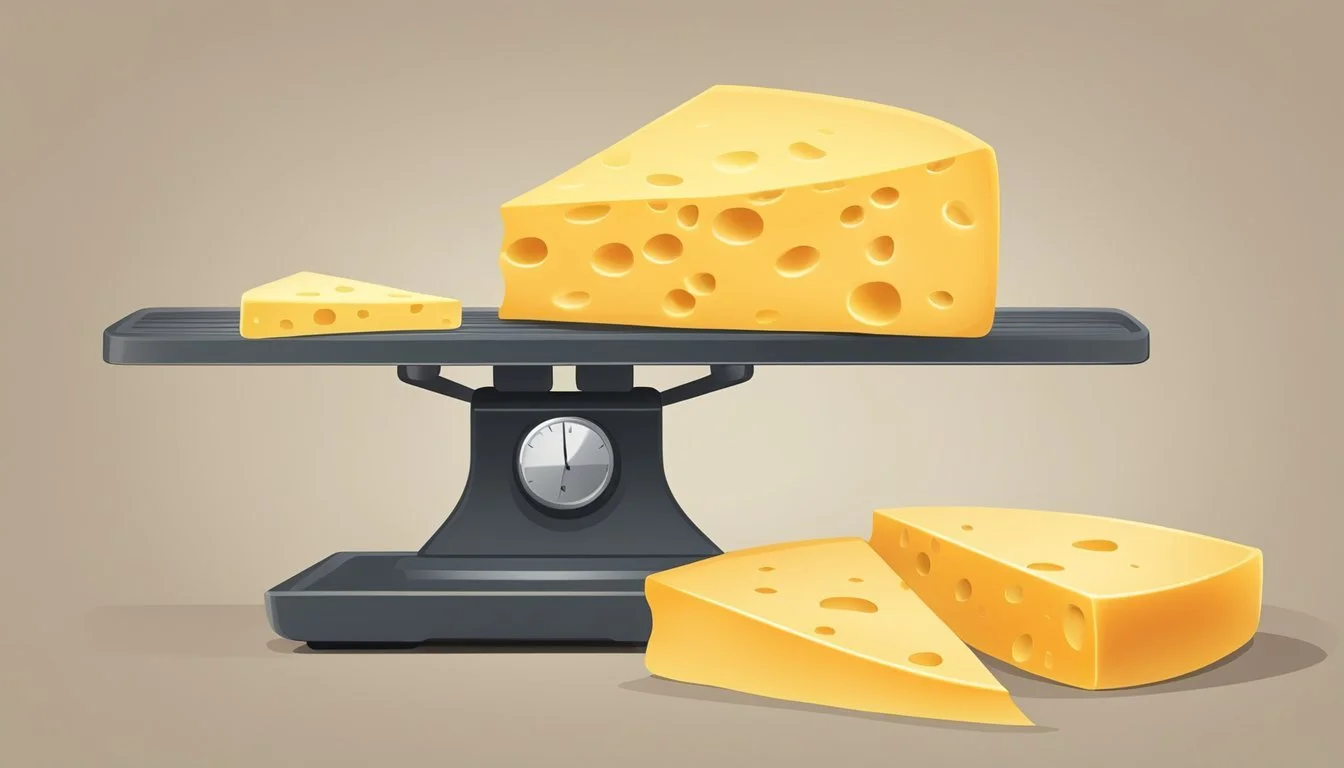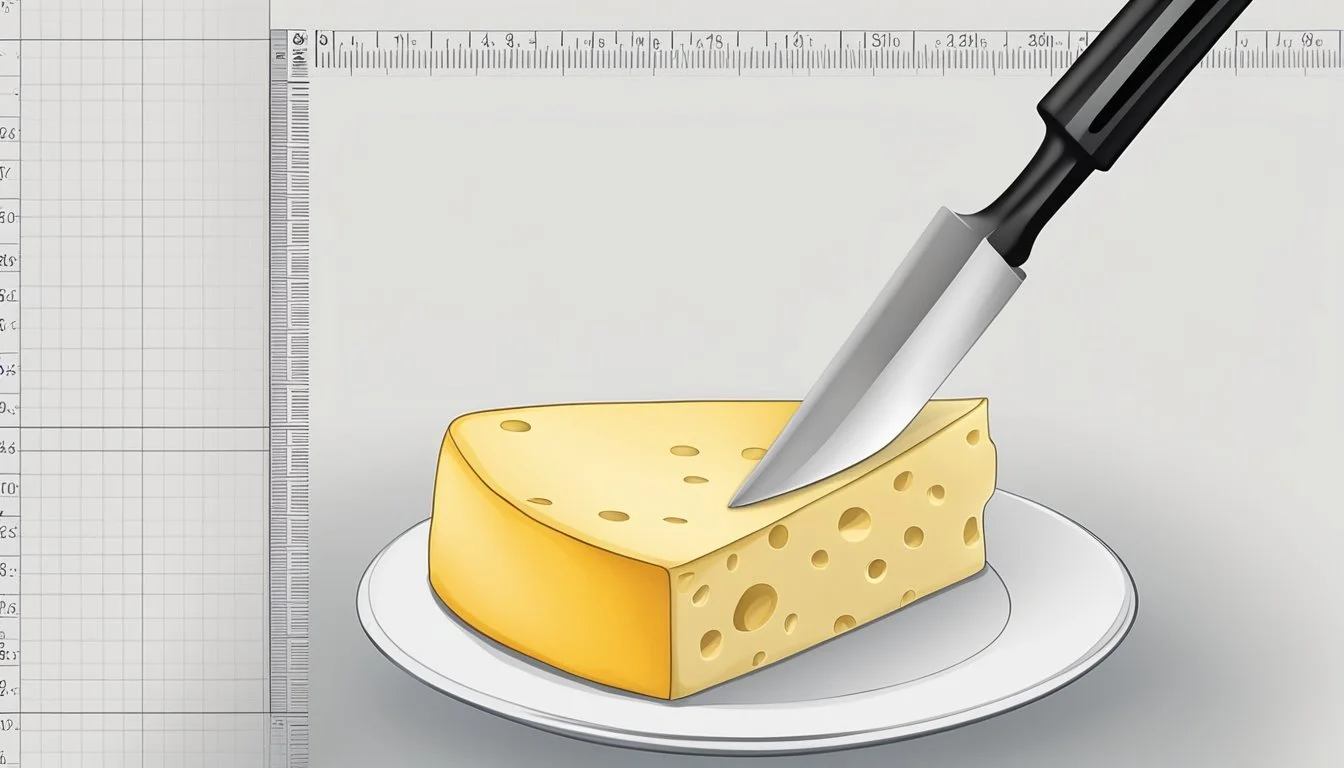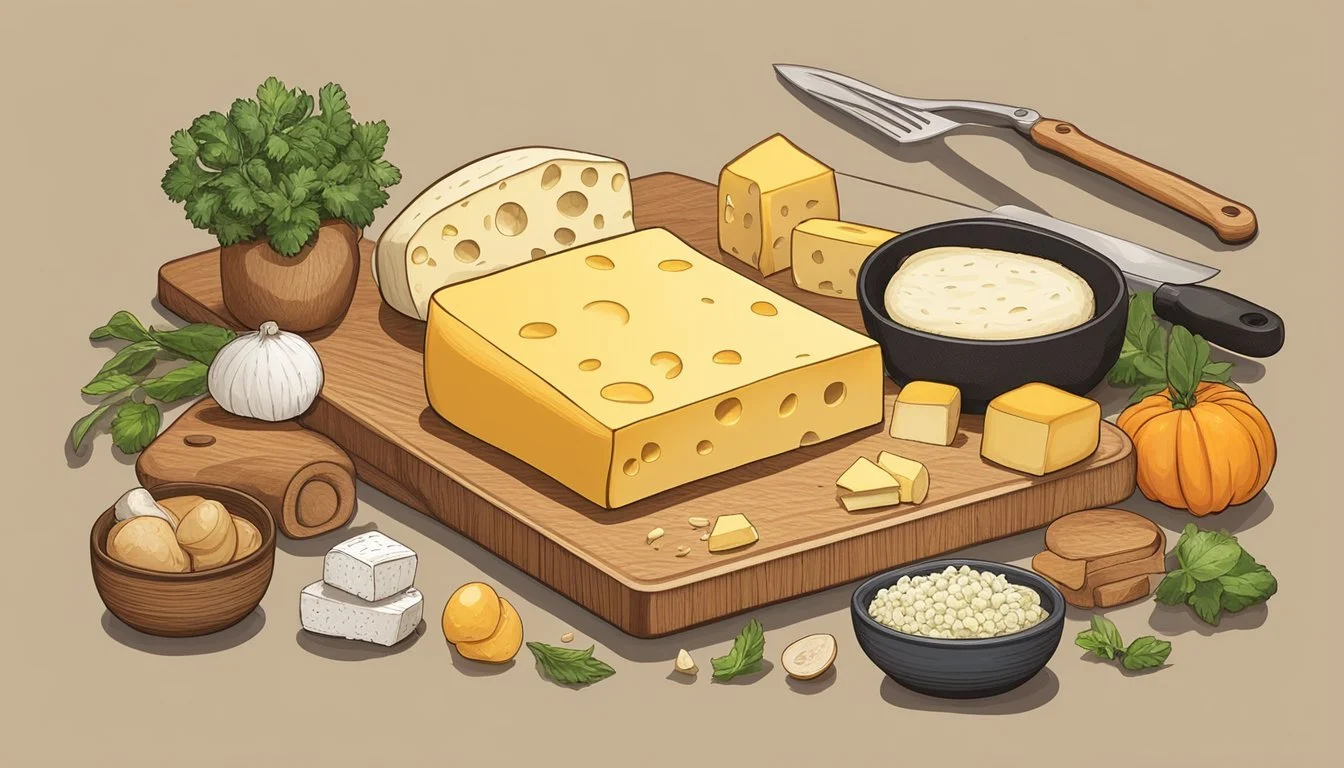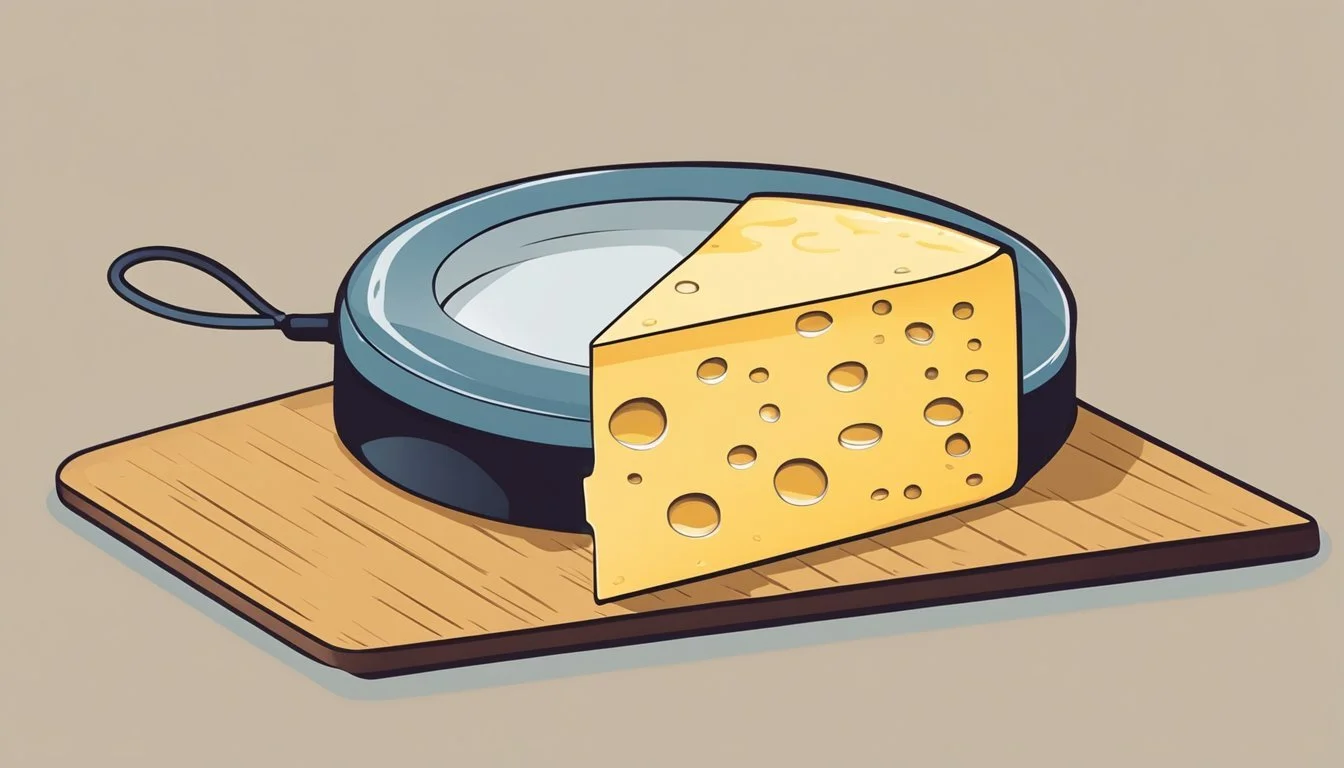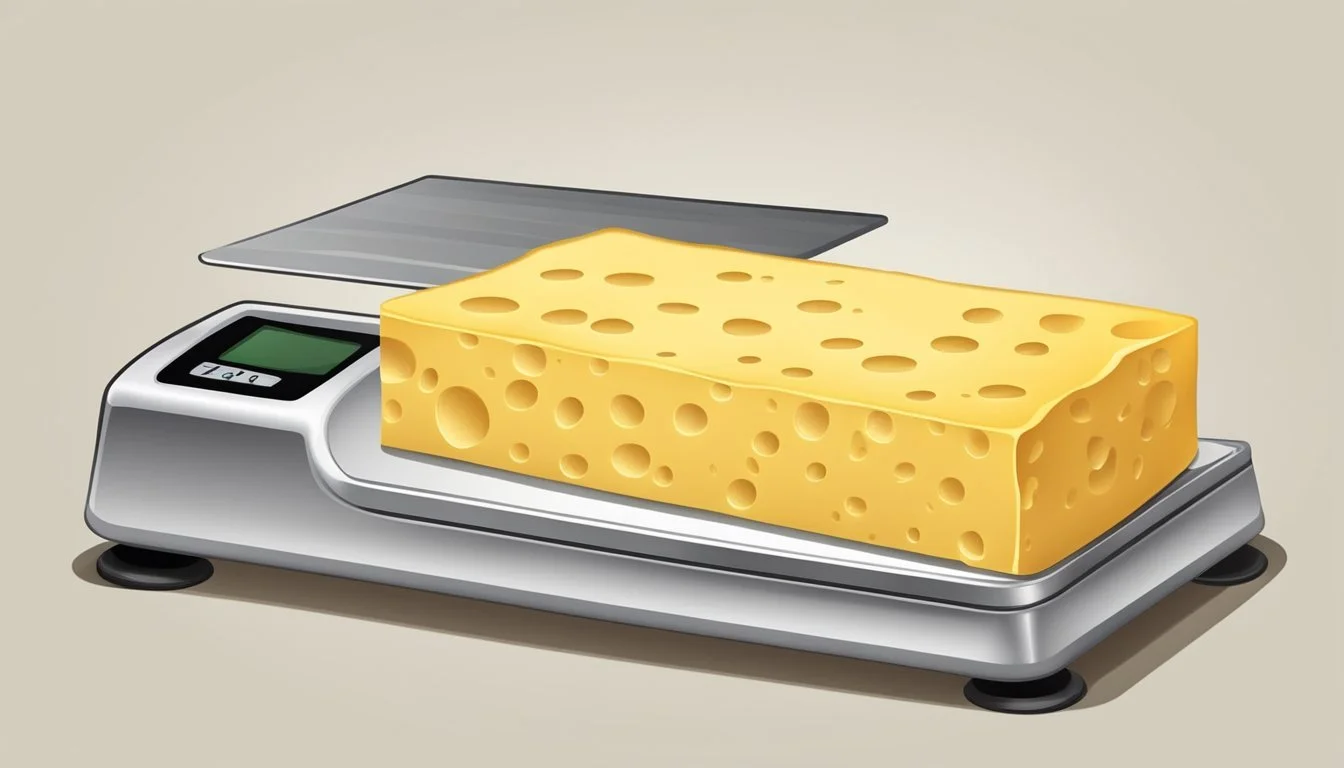How Many Ounces in a Slice of Cheese?
Understanding Cheese Measurements
Determining the weight of a slice of cheese (What wine goes well with cheese?) in ounces varies depending on several factors, including the type of cheese and the thickness of the slice. On average, a slice of cheese is about 0.6 ounces. This standard measurement, however, is a general guideline as different cheeses have different densities and moisture content, leading to variations in weight.
Cheese comes in various textures and forms, from soft and spreadable to hard and grateable. The weight of an ounce of cheese can seem elusive because cheese is often sliced according to preference and recipe requirements. Packaged, pre-sliced cheese typically aims for uniformity, and these slices usually weigh around 0.6 ounces as well.
Consumers and culinary professionals alike often encounter the need to measure cheese accurately. Knowing that an ounce of cheese equates to approximately 1.6 slices based on the average slice weight provides a useful reference. It's important for recipes where precise measurements can make a difference in the final product, such as in baking, where ingredient proportions are crucial.
Understanding Cheese Weights and Measures
When it comes to cheese, understanding the measurements can ensure accurate use in recipes and portion control. Cheese weights can vary depending on the type, thickness, and cut.
The Basics of Cheese Weight
Cheese weight is commonly measured in ounces. A standard slice of cheese, such as cheddar or Swiss, typically weighs about 0.6 ounces. The actual weight can fluctuate based on the cheese's thickness and the type. Thicker slices may push closer to 1 ounce, while thinner slices might be around 0.5 ounces.
How to Measure Cheese
Measuring cheese accurately depends on the consistency and type of cheese. For instance, soft cheeses (What wine goes well with soft cheeses?) like brie are often weighed using a food scale due to their malleable nature. Hard cheeses, such as Parmesan, might be measured in cups, with one cup generally equating to approximately 4 ounces. Pre-sliced cheese offers a convenient and consistent weight for quick use.
Kitchen Tools for Cheese Measurement
A variety of kitchen tools can aid in measuring cheese. A kitchen scale is excellent for precise weight measurement, while a measuring cup is standard for grated or crumbled cheeses. For consistent slicing, tools such as a cheese slicer can help ensure each piece is of uniform thickness and weight, which can be especially helpful in culinary situations requiring exact measurements.
Types of Cheese and Their Characteristics
Understanding the wide range of cheese types is essential for appreciating their distinct textures and flavors. This section comprehensively examines cheeses from the hard to soft spectrum, highlights a number of common varieties, and discusses the textures and flavors characteristic of these dairy products.
Hard vs. Soft Cheese
Hard Cheese: This category typically includes cheeses that have been aged and have a low moisture content, which contributes to their firmer texture. Classic hard cheeses like Cheddar and Parmesan are known for their durability and can often be grated or sliced. They are characterized by a sharp, pronounced taste.
Soft Cheese: In contrast, soft cheese contains a higher moisture content and exhibits a creamier texture. Varieties like Brie and Camembert are great examples, with their velvety rinds and rich flavor profiles. Softer cheeses are typically consumed sooner after production due to their shorter shelf life.
Common Cheese Varieties
Cheddar: Originating from England, this cheese is known for its sharp taste and is a preferred ingredient in sandwiches and as a topping due to its melting qualities.
Gouda: A Dutch cheese with a sweet, creamy flavor, often enjoyed sliced or melted.
Brie: A French cheese with a soft, buttery texture, and a delicate, slightly tangy flavor, commonly paired with fruits.
Mozzarella Cheese: Known for its elasticity and mild flavor, this cheese is famously used on pizzas. (What wine goes well with pizza?)
Swiss: Identified by its iconic holes, Swiss cheese has a mild, nutty flavor.
Goat Cheese: Comes in various forms, from crumbly to creamy, and has a tart, earthy flavor.
American: Processed cheese known for its smooth melt and mild taste, often used in burgers.
Parmesan: Aged for several years, it is granular in texture with a salty, nutty taste.
Cheese Textures and Flavors
The texture of cheese can range from the hard, crystalline structure of well-aged Parmesan to the soft, spreadable nature of fresh goat cheese. The flavors too vary significantly with aging and processing methods – aged cheddar exhibits a sharpness while mozzarella maintains a more subdued, milky taste. Vegan cheese alternatives now mimic these textures and flavors using plant-based ingredients, catering to dietary restrictions and preferences.
Standard Serving Sizes for Cheese
In discussing the serving sizes of cheese, it's essential to understand that the standard serving size and the actual weight of individual slices can vary based on the type of cheese.
What Constitutes a Serving?
A serving size of cheese is generally considered to be 1 ounce. This amount is often compared to the size of a matchbox in physical dimensions. A single slice of cheese usually falls within the range of 0.5 to 1 ounce. This guideline serves as a helpful reference when estimating portion sizes without a scale.
Cheese Serving Size Variations
American Cheese: Often thinner, each slice may weigh approximately 0.5 ounces.
Cheddar or Swiss: These types can have slices closer to 1 ounce each.
Notably, the weight of a cheese slice can differ due to:
Thickness: Thicker slices weigh more.
Cheese Type: Denser cheeses may yield heavier slices per the same thickness.
The concept of serving size is crucial when considering nutrition facts, as calorie and fat content are typically based on a 1-ounce serving of cheese.
Cheese in Recipes and Dishes
Understanding the quantity of cheese to use in a recipe is crucial for achieving the desired taste and consistency. Certain dishes may require precise amounts, while in others, the cheese acts as a garnish or accent.
Incorporating Cheese into Meals
When chefs incorporate cheese into meals, they consider the type of dish and desired flavor profile. For sandwiches and burgers, a standard slice of cheese, typically averaging 1 ounce, can enhance the overall taste. In casseroles or pizzas, the amount of cheese varies according to the recipe, but one can apply a general rule where one cup of shredded cheese equates to 4 ounces. When creating a cheese platter, a variety of cheeses is sliced, and portions can be less standardized, focusing more on the array of choices and visual appeal.
For delicate balance in salads, adding small crumbles or shavings of cheese can be enough, while grilled cheese sandwiches count on a few ounces of cheese to achieve a gooey melt. Additionally, in soups, cheese is often added just before serving as a flavorful garnish or melted into a rich broth for texture and taste.
Cheese-Pairing Ideas
Cheese pairing elevates the dining experience, here are some simple combinations:
Grilled Cheese Sandwich: Cheddar or Gruyère
Burgers: American, Swiss, or Blue Cheese
Salads: Feta, Goat Cheese, or Shaved Parmesan
Soups: Aged Cheddar, Parmesan, or Asiago
Casseroles: Colby, Monterey Jack, or Gouda
Cheese-Related Dietary Considerations
While cheese is a beloved ingredient, dietary considerations must be taken into account. People with lactose intolerance may need to opt for cheeses that are naturally lower in lactose, such as hard cheeses. Some cheeses are also high in fat and should be used moderately in dishes for those monitoring their fat intake. It's also important to be mindful of the sodium content in certain cheeses when preparing meals for those with sodium-restricted diets.
Nutritional Aspects of Cheese
Cheese varies widely in its nutritional composition, with factors such as type and preparation affecting its calories, fat, protein, and calcium content. This diversity makes it a flexible option for various dietary needs.
Calories and Fat Content
A standard slice of cheese contains approximately 84 calories, primarily from fat. One ounce of cheese can have around 99 calories and 8 grams of fat, which may include 6 grams of saturated fat depending on the type. Hard cheeses often have a higher calorie and fat content due to their lower moisture content when compared to soft cheeses.
Calories: 84 per slice
Total Fat: 8 grams per ounce
Saturated Fat: 6 grams per ounce
Protein and Calcium Levels
In terms of protein, an ounce of hard cheese typically offers 8 grams, contributing to muscle repair and growth. Furthermore, cheese is a noteworthy source of calcium; for example, cheddar cheese provides 200 milligrams of calcium per ounce, which constitutes 20% of the recommended daily value. This nutrient is essential for bone health and metabolic functions.
Protein: 8 grams per ounce
Calcium: 200 milligrams per ounce (20% DV)
The specific nutritional values can vary based on the cheese type, with softer cheeses often presenting different profiles from their harder counterparts.
Cheese Storage and Preservation
Proper storage techniques are crucial for maintaining the freshness and extending the shelf life of cheese. Cheese should be stored in conditions that balance humidity and temperature, ensuring it retains its flavor and texture.
Storing Cheese for Freshness
To store cheese for freshness, it should ideally be kept in a refrigerator at temperatures between 35-45℉. Cheese requires a balance of airflow and humidity; hence, it should be wrapped in breathable materials such as waxed or parchment paper. For enhanced longevity, cheese can be placed in a specialized storage unit known as a Cheese Grotto, which maintains optimal humidity. If using a refrigerator, the vegetable crisper drawer offers an excellent environment as it typically has less dry airflow compared to other areas.
Airtight Containers: If a Cheese Grotto is not available, cheese can be stored in airtight containers. Adding a sugar cube can absorb excess moisture.
Location in Refrigerator: Store cheese in the crisper drawer to minimize exposure to dry air.
Freezing and Thawing Cheese
Freezing cheese is an effective strategy to preserve it for long-term use. To freeze cheese, it should be tightly wrapped in paper, then plastic, and, finally, a layer of aluminum foil to protect it from odors and freezer burn. This method is suitable for many semi-soft, semi-hard, and hard cheeses.
When ready to use the cheese, it is important to thaw it properly to preserve its quality:
Transfer the cheese from the freezer to the refrigerator and allow it to thaw slowly.
Thawing time varies but typically requires several hours to a full day, depending on the size of the cheese block.
Note: Freezing may alter the texture of some cheeses, so this method is best for cheese intended for cooking or where texture changes are less critical.
Advanced Cheese Knowledge
When it comes to cheese, understanding the nuances that affect weight and content is crucial for enthusiasts and professionals alike. It's not just the type of cheese; factors like thickness, moisture content, and size deeply influence a slice's weight.
Assessing Cheese Quality
Cheese quality can often be gauged by thickness and moisture content. A thicker slice, often found in varieties like Havarti or Camembert, indicates a higher moisture content, which can affect both the weight and the flavor profile. Conversely, hard cheeses typically possess a lower moisture content, making them lighter by volume. Cheese lovers should note that:
Thicker slices of soft cheese will generally weigh more than the same size slice of a hard cheese.
For precise culinary needs, a kitchen scale can be invaluable in assessing the actual weight of a cheese slice, especially when consistency is key.
Understanding Cheese Labels
Labels on cheese provide vital information about the cheese's characteristics, and knowing how to read them is essential. Key details include:
Label Information Description Type of Cheese Hard, semi-hard, soft, crumbly Origin of Cheese Region or country of production Size and Thickness Typically in ounces or grams
Sizes of cheese slices can vary significantly by brand and type, with pre-sliced cheeses often adhering to standard weights like 0.6 ounces for American cheese, but can range from 0.4 to 1 ounce.
Moisture content affects the weight as well; soft cheeses will weigh more for the same volume when compared to hard cheeses because of their higher moisture content. Labels may also indicate this through terms like "double cream" for cheeses with extra moisture.
Knowledge of labels and quality indicators helps in making an informed choice to meet specific taste and recipe requirements, ensuring a fulfilling cheese experience.
Miscellaneous Cheese Facts
The nuances of cheese including its regulatory aspects and cultural presence offer intriguing insights into its ubiquitous role in cuisine and society.
Cheese and Food Regulations
United States Department of Agriculture (USDA) sets standards for various cheese products to ensure safety and quality. For instance, a cheese labeled as "American Cheese" must adhere to specific processing and compositional standards. Varieties of cheese such as Swiss and Pepper Jack must meet particular criteria related to flavor, texture, and moisture content. The USDA also regulates the labeling of cheeses with respect to lactose content, which is pertinent information for individuals with lactose intolerance.
Weight and Volume: The USDA has guidelines that stipulate what constitutes 1 oz of cheese. For example, 1 oz of American cheese is typically one slice, equivalent to approximately 28 grams. However, the actual weight can fluctuate based on the cheese type and slice thickness. Freshly shredded or shredded cheese does not have a standard volume or weight per slice, as it significantly depends on the size of the shreds and the density of the pack.
Cheese in Popular Culture
Cheese has made a significant imprint on popular culture, with certain varieties becoming iconic due to their distinct characteristics. Swiss cheese is frequently recognized by its holes, which are formed by gas bubbles during fermentation. Pepper Jack cheese has become a favorite for those seeking a spicy kick, with the inclusion of fiery pepper flakes enhancing its flavor.
Feta and Parmesan are other prominent examples. Feta, with its crumbly texture and tangy taste, is often associated with Greek cuisine, while Parmesan's hard, granular texture has made it a staple in Italian dishes, especially when freshly shredded over pasta.
Characters in films and television often mirror societal preferences for certain cheeses, using them as a means to convey personality traits or cultural backgrounds. Cheese has been an accessory to express sophistication, indulgence, and even humor, with its presentation varying from a humble sandwich to a decadent cheeseboard centerpiece.
Helpful Tips for Cheese Enthusiasts
When dealing with cheese, it's crucial for enthusiasts to know how to measure accurately and use cheese creatively in the kitchen. The key to success is precision and innovation.
Cheese Measurement Hacks
Understanding the weight of cheese helps in culinary precision, especially when recipes call for specific portions. A standard slice of cheese typically weighs about 0.6 ounces, but this can vary. For harder cheeses like cheddar, slices may weigh more, while softer cheeses like brie may weigh less.
Kitchen Scales: The most reliable method for measuring cheese is to use a kitchen scale. Cheese lovers should aim for a scale that measures in both ounces and grams for ease of use.
Visual Aids: As a general guideline, a slice of cheese about the size of a credit card roughly equates to 1 ounce. This is particularly helpful when one doesn't have a scale at hand.
Thickness Judging: Estimating based on thickness can be helpful; typically, a thick slice is closer to 1 ounce, while a thin slice might be around 0.4 ounces.
Creative Uses for Cheese In Cooking
Cheese can elevate a simple dish with its richness and versatility. Its application ranges from melting over a hot dish to being a key ingredient in recipes.
Melting Marvel: Cheese is perfect for adding a gooey, flavorful layer on top of dishes like pizzas and casseroles. It's important to use cheese that melts well, such as mozzarella on pizza dough, for that perfect stringy texture.
Enhance Flavor: Adding a sprinkle of cheese can enrich the profile of a dish. Sharp cheeses can add a salty component, while softer ones can impart a delicate taste.
Cheese Crusts: For an inventive twist, use grated cheese as a crust for baked or fried foods. As it cooks, the cheese becomes crispy, adding texture to the meal.
By using these hacks and creative techniques, cheese enthusiasts can measure their cheese accurately and incorporate it into their cooking in delightful ways.
Conclusion
The weight of a cheese slice can vary. The typical slice hovers around 0.6 ounces, with considerations for the cheese type and slice thickness influencing this figure. For harder cheeses, such as cheddar or gouda, the weight per slice may be slightly more, potentially up to or exceeding 1 ounce. Conversely, softer cheeses like brie may weigh less.
Pre-packaged cheese slices offer consistency, commonly weighing in at about 0.6 ounces, which serves as a helpful guideline for consumers.
Factors Affecting Slice Weight:
Cheese variety (harder vs. softer)
Slice thickness
Brand specifications
It is essential for consumers to note that these figures are approximations, and real-world weights may deviate from these averages due to the factors mentioned.
When concerning dietary requirements or recipe precision, a kitchen scale is recommended to ensure accurate measurements. The weight of a slice of cheese accounts for more than just mass; it carries implications for nutritional value and culinary outcomes, making these approximations a practical reference despite inherent variability.

